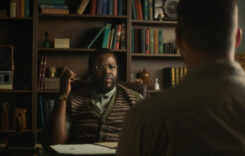JULY 6, 2016
Sidekicks can be a troublesome thing.
In TV, there is a long tradition of series producers, who, after seeing one of their supporting characters suddenly becoming an audience favorite, take the bait and build an entirely new series around that sidekick character. If you like this character in ten minute spurts, the reasoning goes, you’ll love him even more in 30 minutes.
The trouble why they don’t often work is that the very reason why a sidekick character “pops” — it’s precisely because you only see them on screen briefly. They come in, get their laughs and leave before they wear out their welcome.
So there was some press concern when Pixar announced that the long-awaited sequel to its beloved 2003 film “Finding Nemo” would center instead on the film’s sidekick Dory, the ever-forgetful blue tang voiced in “Nemo” by Ellen DeGeneres. It wasn’t as if audiences didn’t love Dory — DeGeneres brought a joyful voice to the character that audiences just ate up. It was whether Dory was too limited a character to carry a 100-minute feature film.
It’s Pixar, however, so we needn’t have worried.
Of course, Dory doesn’t have to carry the film all by herself. Nemo (now voiced by Hayden Rolence) is back, along with his overprotective dad Marlin (Albert Brooks), but in “Finding Dory,” they are now the sidekicks. Set one year after the first film ended, Dory uncharacteristically has a sudden vivid memory of her parents, with whom she wants to be reunited. With the help of Marlin and Nemo, the trio crosses the Pacific to search for them in California. But Dory is injured and is separated from her friends, but she is rescued by volunteers from the nearby Marine Life Institute (which appears to be modeled on the real-life Monterey Aquarium).
As she recovers, Dory is no less determined in her quest to find her parents, and she is helped by a whole array of colorful Pixar characters — Hank, a grumpy septopus (Ed O’Neill, who swims away with the film’s best lines); Dory’s childhood friend Destiny (Kaitlin Olsen), a near-sighted whale shark; Bailey (Ty Burrell), a whale who has lost his sense of sonar; and two Cockney sea lions Fluke and Rudder (Idris Elba & Dominic West). Who knows? — one of these characters could get a film of their own in ten years.
Complications, as they say, ensue, and like (almost) every other Pixar film, the script here (this time by director Andrew Stanton and co-writer Victoria Strouse) is solidly plotted with just enough adult gag lines to keep Mom and Dad engaged. And there’s always a moral or two hidden between the lines, here emphasizing characters with some form of a disability (Dory’s memory loss, Hank losing a tentacle, Bailey losing his sonar, not to mention Nemo who was born with a deformed flipper) and learning that overcoming that disability is part of what makes us special.
Still as enjoyable as “Finding Dory” is (and it is very enjoyable), there’s a little bit of a been-there, done-that feeling that the film evokes. The plot of a family-based search is a bit too familiar from “Nemo,” and even the film’s blue palette and dramatic visuals don’t seem quite as breathtaking as they did in 2003. Quibbling, I know, but I’m here to quibble.
However, for real groundbreaking visuals, however, make sure to come to the theater early for the Pixar short “Piper,” the story of a young shore bird overcoming its fears. What’s amazing are the images, particularly the way the animators capture the look of sea foam in a way that I’ve never before seen in a movie. Don’t miss it.
“FINDING DORY” GRADE: B+












